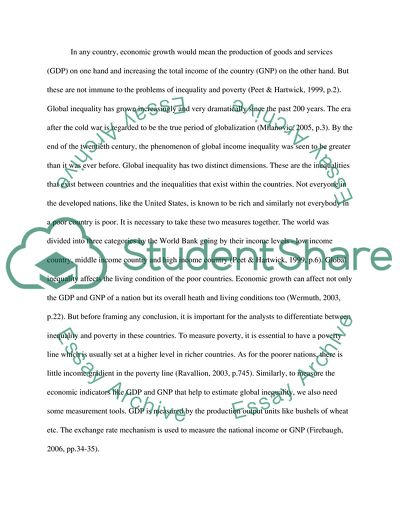Cite this document
(Do we now live in a more equal world Essay Example | Topics and Well Written Essays - 2000 words, n.d.)
Do we now live in a more equal world Essay Example | Topics and Well Written Essays - 2000 words. https://studentshare.org/sociology/1780211-do-we-now-live-in-a-more-equal-world-describe-the-current-pattern-of-global-inequalities-today-how-it-has-evolved-over-the-last-200-years-and-why-these-global-inequalities-have-occurred
Do we now live in a more equal world Essay Example | Topics and Well Written Essays - 2000 words. https://studentshare.org/sociology/1780211-do-we-now-live-in-a-more-equal-world-describe-the-current-pattern-of-global-inequalities-today-how-it-has-evolved-over-the-last-200-years-and-why-these-global-inequalities-have-occurred
(Do We Now Live in a More Equal World Essay Example | Topics and Well Written Essays - 2000 Words)
Do We Now Live in a More Equal World Essay Example | Topics and Well Written Essays - 2000 Words. https://studentshare.org/sociology/1780211-do-we-now-live-in-a-more-equal-world-describe-the-current-pattern-of-global-inequalities-today-how-it-has-evolved-over-the-last-200-years-and-why-these-global-inequalities-have-occurred.
Do We Now Live in a More Equal World Essay Example | Topics and Well Written Essays - 2000 Words. https://studentshare.org/sociology/1780211-do-we-now-live-in-a-more-equal-world-describe-the-current-pattern-of-global-inequalities-today-how-it-has-evolved-over-the-last-200-years-and-why-these-global-inequalities-have-occurred.
“Do We Now Live in a More Equal World Essay Example | Topics and Well Written Essays - 2000 Words”. https://studentshare.org/sociology/1780211-do-we-now-live-in-a-more-equal-world-describe-the-current-pattern-of-global-inequalities-today-how-it-has-evolved-over-the-last-200-years-and-why-these-global-inequalities-have-occurred.


